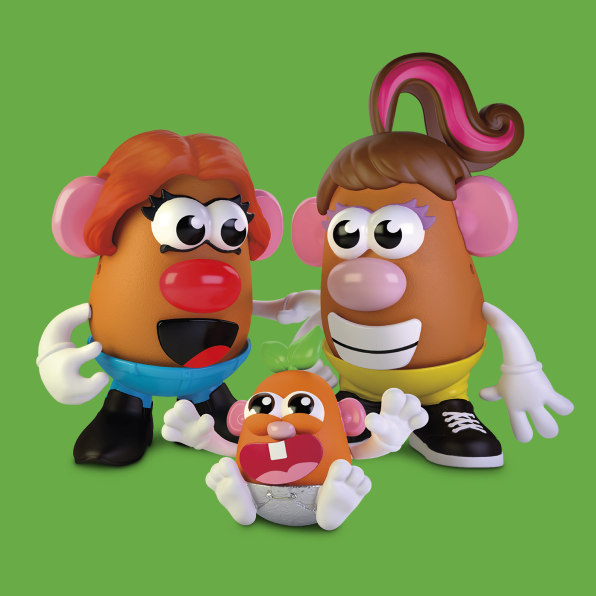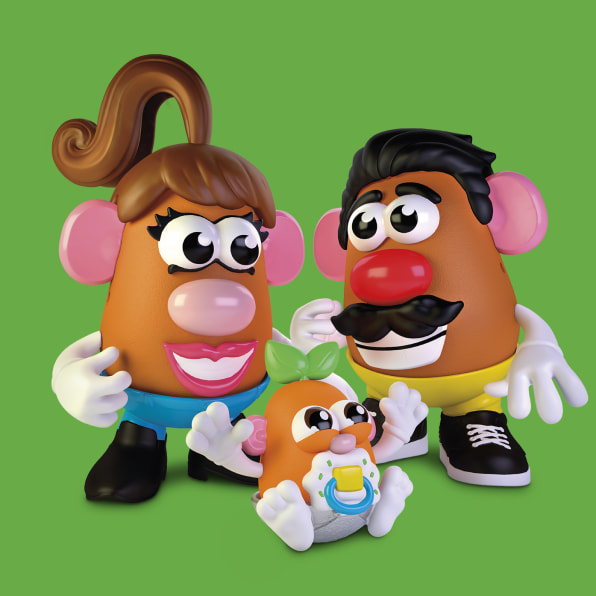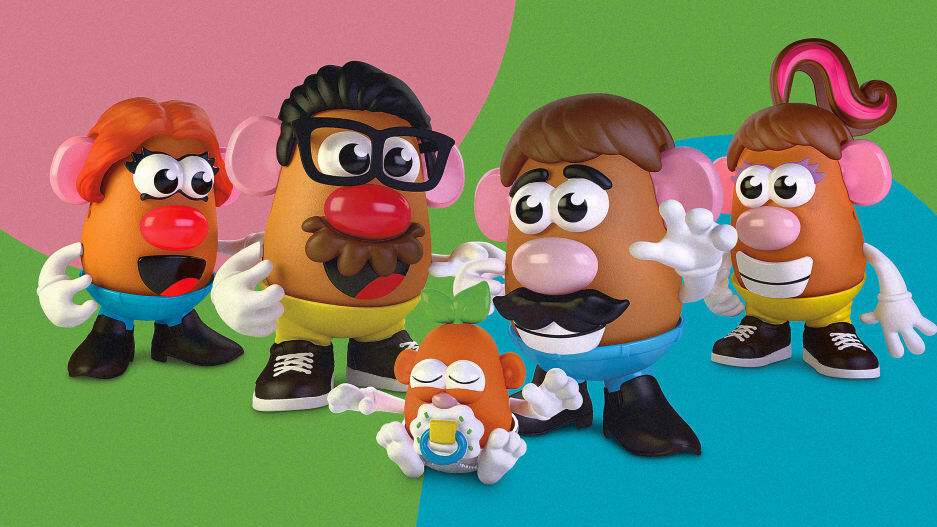On the surface, it may seem like a subtle shift, but it is designed to break away from traditional gender norms, particularly when it comes to creating Potato Head families—how toddlers frequently play with the toy, according to Hasbro’s research.
But starting this fall, when the new brand is unveiled, kids will have a blank slate to create same-sex families or single-parent families. It’s a prime example of the way heritage toy brands are evolving to stay relevant in the 21st century.
“Hasbro is making sure all feel welcome in the Potato Head world by officially dropping the Mr. from the Mr. Potato Head brand name and logo to promote gender equality and inclusion,” the company said in a statement on Thursday.
After it announced the change, the company issued a clarifying statement on Twitter saying that the Mr. and Mrs. Potato Head characters would retain their individual courtesy titles.
“Hold that Tot — your main spud, MR. POTATO HEAD isn’t going anywhere!” the company said. “While it was announced today that the POTATO HEAD brand name & logo are dropping the ‘MR.’ I yam proud to confirm that MR. & MRS. POTATO HEAD aren’t going anywhere and will remain MR. & MRS. POTATO HEAD.”
In the fall, the company will introduce its new “Potato Family Pack” that will encourage children to “create your Potato Head family.” The pack will come with two large potato bodies, one small potato body and 42 accessories.
The brand name change will be accompanied by “a whimsical color palette and more inclusive messaging,” the company said.

Rich Ferraro, the chief communications offer for Glaad, an L.G.B.T. advocacy organization, applauded the change, saying it was part of “a larger movement towards greater diversity and inclusion in toys and media aimed at kids.”
Hasbro is the latest toymaker to update or reinvent some of its classic brands to make them more inclusive and diverse.
This fall, you’re cordially invited to Mr. Potato Head’s wedding. He’s marrying his partner of many years, another Mr. Potato Head. And I promise it’s going to be the party of the year, with—you guessed it—plenty of spuds on the menu.
Hasbro launched Mr. Potato Head in 1952 for the princely sum of $0.98 (or $10 in today’s currency). Back then, families had to supply their own real potato, which kids could then turn into little people thanks to plastic pieces in the box, such as hands, feet, and eyes, and accessories such as a pipe, and felt pieces that were meant to be mustaches.
The following year, Mrs. Potato Head launched with feminized accessories, such as hair bows and red high heels. The Potato Heads were the first toys to be marketed directly to kids, and boy did that strategy work like gangbusters: More than one million kits were sold in the first year.
The enduring success of Potato Head comes down to its sheer silliness, says Kimberly Boyd, an SVP and GM at Hasbro who works on the Potato Head brand. The idea of a potato person with an enormous mustache is universally hilarious, particularly to the sensibilities of small children. But after that initial laugh, Boyd says that kids continue to engage with the toy because it provides a canvas onto which they can project their own experiences.
“The sweet spot for the toy is two to three years old,” she says. “Kids like dressing up the toy, then playing out scenarios from their life. This often takes the form of creating little potato families, because they’re learning what it means to be in a family.”
This kind of freedom is not that common in children’s toys. In recent years, some heritage brands have evolved to keep up with the values of many of today’s parents; Mattel has worked to make Barbie dolls more ethnically diverse and size-inclusive, for instance. But few have pushed the boundaries on gender or sexuality. The storylines around Barbie and American Girl involve heterosexual marriage. And the many Disney princesses that fill our lives marry princes or stay clear of marriage altogether.

This can be confusing to kids who live in progressive milieus, where they are exposed to many different family structures. At my daughter’s school, for instance, kids appear to be constantly trying to make sense of how the heteronormative narratives around them square with their everyday reality, where some families have two moms or two dads, and others have a single parent.
When my daughter plays dress-up in class, she sometimes marries a boy and sometimes marries a girl; it feels strange that not all toys give her this freedom.


